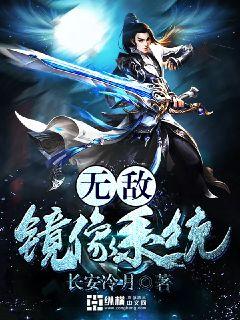
Certainly! Here's the structured article on "Optimizing Training Performance through Nutrition and Diet for Professional Athletes":
**Abstract:**
Professional athletes rely heavily on nutrition and diet to enhance their training performance. This article explores key factors that optimize their performance through dietary strategies. It examines the role of macronutrients, micronutrients, hydration, and timing of meals in maximizing athletic potential. By understanding and implementing these factors, athletes can achieve peak performance and maintain optimal health.
---
**1、Macronutrients:**
Macronutrients play a fundamental role in the diet of professional athletes, influencing energy levels, muscle recovery, and overall performance.
Athletes typically require a balanced intake of carbohydrates, proteins, and fats to meet their energy demands and support muscle repair.
Carbohydrates serve as a primary fuel source, especially during high-intensity activities, emphasizing the importance of adequate intake and timing to sustain performance.
Proteins are essential for muscle repair and growth, with athletes needing slightly higher amounts to recover effectively from training sessions.
Timing protein consumption around workouts is crucial for maximizing muscle synthesis and adaptation to exercise-induced stress.
A variety of protein sources, including lean meats, dairy, and plant-based options, offer athletes flexibility in meeting their nutritional needs.
Healthy fats contribute to sustained energy levels and support overall health in athletes, emphasizing sources like nuts, seeds, and fatty fish.
A balanced intake of omega-3 and omega-6 fatty acids aids in reducing inflammation and optimizing recovery post-training.
Adjusting fat intake based on training intensity and individual metabolic needs helps athletes maintain optimal body composition and performance.
Carbohydrates are critical for replenishing glycogen stores and providing quick energy during intense exercise sessions.
Choosing complex carbohydrates such as whole grains and vegetables ensures sustained energy release and supports prolonged athletic performance.
Strategic carb-loading before competitions or high-demand periods helps athletes maximize glycogen storage and enhance endurance.
---
**2、Micronutrients:**
Beyond macronutrients, micronutrients are essential for maintaining overall health, supporting immune function, and optimizing athletic performance.
Athletes require adequate intake of vitamins and minerals to support physiological processes, including bone health, oxygen transport, and muscle contraction.
Key micronutrients such as iron, calcium, vitamin D, and antioxidants play crucial roles in reducing the risk of injury and illness among athletes.
Iron is vital for oxygen transport and energy production, particularly significant for endurance athletes to prevent fatigue and optimize performance.
Calcium supports bone health and muscle function, essential for maintaining skeletal integrity and reducing the risk of stress fractures.
Ensuring sufficient intake of these minerals through diet and, if necessary, supplementation helps athletes meet their unique nutritional demands.
Vitamins such as vitamin D, C, and E contribute to immune function and recovery, aiding in the repair of muscle tissue and reducing oxidative stress.
Antioxidants from fruits, vegetables, and nuts help mitigate exercise-induced inflammation and support cellular repair processes post-exercise.
Strategies to incorporate a diverse range of micronutrient-rich foods into an athlete’s diet promote overall health and optimize training adaptations.
Hydration is critical for maintaining performance and preventing dehydration-related complications during training and competition.
Athletes should monitor fluid intake to replace losses through sweat, adjusting consumption based on environmental conditions and individual sweat rates.
Optimal hydration supports thermoregulation, nutrient transport, and cognitive function, enhancing overall athletic performance and recovery.
---
**3、Timing of Meals:**
The timing of meals and nutrient intake around training sessions is crucial for optimizing energy availability, promoting recovery, and supporting adaptation to exercise stress.
Strategic meal timing helps athletes maximize glycogen storage, enhance muscle protein synthesis, and minimize muscle breakdown.
Pre-exercise nutrition focuses on providing adequate carbohydrates for fuel and minimizing gastrointestinal distress during workouts.
Consuming a balanced meal or snack containing carbohydrates and a moderate amount of protein 2-4 hours before exercise provides sustained energy and supports muscle function.
Hydration before exercise ensures adequate fluid balance and enhances thermoregulation during physical exertion, optimizing performance and reducing the risk of dehydration.
Immediately following exercise, consuming a combination of carbohydrates and proteins within the first 30 minutes to 2 hours supports glycogen replenishment and muscle repair.
Timing protein intake post-exercise stimulates muscle protein synthesis, facilitating recovery and adaptation to training-induced stress.
Incorporating micronutrients and fluids into post-exercise meals aids in rehydration, replenishment of electrolytes, and overall recovery.
Strategically timing meals and snacks throughout the day maintains stable blood sugar levels and sustains energy for consistent training performance.
Adjusting nutrient intake based on training volume and intensity helps athletes meet their energy demands and achieve optimal nutrient timing for enhanced performance.
Individualized nutrition plans tailored to training schedules and performance goals optimize nutrient timing strategies, supporting long-term athletic success.
---
**4、Conclusion:**
Optimizing training performance through nutrition and diet involves a comprehensive approach focusing on macronutrients, micronutrients, hydration, and meal timing.
By understanding the role of each component and implementing evidence-based strategies, athletes can enhance performance, support recovery, and maintain overall health.
Continued research and personalized nutrition plans are essential to meet the unique needs of professional athletes and maximize their athletic potential.
Overall, integrating these key factors into a structured nutrition plan empowers athletes to achieve peak performance and excel in their respective sports.
文章摘要的内容:
《风暴球场:教练的荣耀与挑战》探索了足球教练这一职业的辉煌与挑战。从专业技能到人际关系,从战术布局到情绪管理,教练们面临着独特而复杂的压力。本文将从教练的技术素养、领导力培养、心理素质以及职业发展路径等四个方面深入剖析,揭示出这个职业的精彩与考验。
足球教练需要精湛的技战术水平。首先,他们必须深谙足球规则与战术战略,能够根据比赛情况调整阵型与战术。其次,教练的训练能力也至关重要,他们需要设计并实施有效的训练计划,提高球员的技术水平和比赛适应能力。
然而,技术素养并非唯一标志。教练还需要善于观察和分析比赛,及时调整战术和阵容,以应对对手的变化。同时,他们还必须不断学习,跟上足球发展的步伐,不断更新自己的知识和理念。
领导力是一名优秀教练的必备品质。教练需要建立起与球员、工作人员以及俱乐部管理层之间的良好关系,激发球员的潜能,调动团队的积极性。在困难和挑战面前,教练更需要展现出坚定的领导力,稳定球队的士气,引导他们克服困难,取得胜利。
此外,教练还需要具备良好的沟通能力和团队管理能力,能够有效地与球员和工作人员沟通,协调团队内部关系,促进团队的凝聚力和战斗力。
然而,领导力的培养是一个长期的过程,教练需要不断反思和总结,提升自己的领导力水平。
足球教练面对着巨大的心理压力。比赛胜负、球员状态、媒体压力等因素都会影响到教练的心理状态。因此,教练需要具备良好的心理素质,能够保持冷静,应对各种挑战。
在挫折和失败面前,教练更需要具备坚韧不拔的意志和乐观积极的态度,及时总结经验,吸取教训,不断调整和改进自己的工作。
同时,教练还需要具备良好的情绪管理能力,能够有效地处理与球员和工作人员之间的关系,保持团队的和谐与稳定。
足球教练的职业发展路径多种多样。一些教练通过从球员起步,逐步晋升为教练,并最终成为顶级教练。而另一些人则通过系统的教练培训和学习,直接进入教练行业。
无论是哪种路径,教练都需要不断学习和积累经验,提升自己的专业素养和领导力水平。同时,他们还需要不断拓展自己的人脉和资源,为自己的职业发展打下坚实的基础。
总结:
足球教练这一职业既光荣又充满挑战。他们需要具备精湛的技术素养、卓越的领导力、稳定的心理素质以及清晰的职业发展规划。只有不断努力和提升自己,才能在这个竞争激烈的领域中脱颖而出。
文章总结内容第二自然段
文章摘要:本文将详细探讨斯洛伐克足球明星的身价排名及其背景。首先介绍斯洛伐克足球的整体发展概况,然后分析影响球员身价的因素,接着深入研究几位代表性球员的职业生涯和成就,最后总结他们在国际足坛的地位与影响。
斯洛伐克足球起步较晚,但在近年来迅速发展,尤其是通过青训体系的建设和国内联赛的提升。斯洛伐克足协的推动下,越来越多的年轻球员有机会在国内外展示才华。
斯洛伐克国家队在国际赛场上的表现逐渐引起关注,这为本国球员的身价提升奠定了基础。国内联赛的竞争也促使球员不断提高水平,进而在欧洲俱乐部中有更大的发展空间。
球员身价的提升离不开多方面因素的综合作用。首先是球员的年龄与潜力,年轻且有潜力的球员往往能够吸引更多俱乐部的关注,从而提高身价。
其次是球员的技术与表现。技术高超、在比赛中频频展现出色的球员,无疑能够赢得更多的关注和肯定,进而推动其身价的上涨。
另外,球员所处的俱乐部及其参与的比赛水平也是决定身价的重要因素。参加高水平联赛和国际赛事的球员,通常能够获得更多的曝光机会和提升空间。
马雷克·汉卡:作为斯洛伐克足球的代表性人物之一,汉卡在国际足坛上拥有辉煌的职业生涯。他效力于多家知名俱乐部,并且多次代表国家队参加重要比赛,成为球队的核心人物。
罗伯特·马科:马科以其强大的进攻能力和丰富的比赛经验著称。他在欧洲俱乐部中表现出色,不仅帮助球队赢得多项荣誉,也成为球迷心目中的偶像。
彼得·泽廖:作为一名年轻的后卫,泽廖展现出色的防守技巧和出色的身体素质。他在国内外赛场上都有出色表现,备受球迷和教练的青睐。
斯洛伐克球员在国际足坛上的地位逐渐提升。他们不仅在俱乐部赛事中发挥关键作用,也在国家队中展现出色,为国家荣誉而战。
他们的出色表现不仅带动了本国足球的发展,也为更多年轻球员树立了榜样。斯洛伐克足球明星的身价随之上涨,反映了他们在国际足坛上的影响力和价值。
总结:
斯洛伐克足球明星身价排名及其背景的探讨揭示了这些球员在国际足坛上的重要地位和影响力。他们不仅在俱乐部赛事中表现出色,也在国家队中为国家争光。通过对他们职业生涯和成就的分析,可以看出斯洛伐克足球的发展潜力和影响力。未来,随着更多优秀球员的涌现,斯洛伐克足球有望在世界舞台上继续发光发热。
文章摘要的内容:韩国足球青训一直以来备受瞩目,其成功的秘诀不仅仅在于培养出了众多优秀的足球运动员,更在于其独特的培训体系和方法。本文将从四个方面详细探讨韩国足球青训的秘诀:一是全面的基础训练,二是科学的体能和技战术训练,三是心理素质的培养,四是系统化的比赛经验积累。通过对这些方面的分析,可以更好地了解韩国足球青训成功的原因和方法。
韩国足球青训的成功离不开全面的基础训练。在年轻球员刚刚踏入足球世界时,他们会接受到系统、全面的基础技术训练。这包括传球、控球、射门等基本功的训练,而且注重于细节和基础动作的规范性。
此外,基础训练还包括对于足球规则、战术基础等方面的教育。这种全面的基础训练为年轻球员打下了坚实的技术和理论基础,为他们未来的发展奠定了良好的基础。
韩国足球青训机构还注重个性化的基础训练,根据不同年龄段、不同技术水平的球员,制定相应的训练计划,确保每个球员都能够得到有效的提升。
在基础训练的基础上,韩国足球青训更注重科学的体能和技战术训练。体能训练包括力量、速度、耐力等方面的提升,以确保球员在比赛中具备良好的身体素质。
同时,技战术训练注重于培养球员的意识、判断和反应能力。通过模拟比赛场景,让球员在真实的环境中学习和提升技战术水平,培养他们的团队意识和个人能力。
科学的体能和技战术训练使得韩国青训培养出了众多技术娴熟、身体素质过硬的优秀球员,为其国家队和职业俱乐部输送了源源不断的人才。
除了技术和身体素质的培养,韩国足球青训还注重于培养球员的心理素质。他们通过心理训练课程,帮助球员建立自信心、抗压能力和团队合作意识。
在竞技体育中,良好的心理素质是非常重要的,它能够帮助球员在比赛中保持冷静、应对挑战,从而发挥出最佳水平。韩国足球青训通过心理素质的培养,为球员在竞技场上取得成功提供了重要保障。
这种注重心理素质的培养也使得韩国球员在国际大赛上表现抢眼,成为了不可忽视的竞争对手。
最后,韩国足球青训还注重于为年轻球员提供系统化的比赛经验。他们组织各类比赛和联赛,让球员在真实的比赛环境中锻炼自己,积累比赛经验。
通过参加各种比赛,球员不仅可以检验自己的训练成果,还能够学习和成长。在比赛中,他们会面对各种不同的情况和对手,从中吸取经验教训,不断提升自己的竞技水平。
这种系统化的比赛经验积累为年轻球员的成长提供了重要支持,也为他们日后在职业足球生涯中奠定了坚实的基础。
总结:
韩国足球青训之所以成功,关键在于全面的基础训练、科学的体能和技战术训练、心理素质的培养以及系统化的比赛经验积累。这些方面相互配合,共同促进了青训体系的健康发展,培养出了大量优秀的足球人才,为韩国足球的发展壮大做出了重要贡
### 文章摘要
韩国足球史上涌现出了许多传奇球员,他们在过去、现在和未来都留下了深刻的印记。这篇文章将从多个角度探讨这些传奇球员的历史、现状以及未来展望。我们将深入挖掘他们在韩国足球发展中的贡献,并展望他们对未来的影响。
---
韩国足球历史上,有着许多令人难忘的传奇球员。首先,我们回顾一些过去的传奇,如卢本·达芬尼和朴智星。他们在国内外赛场上展现了非凡的技艺和领袖气质,为韩国足球树立了榜样。
其次,我们探讨这些传奇球员在国家队的表现。他们在世界杯等国际赛事上的出色发挥,为韩国足球争得了荣誉,并将其推向了国际舞台。
最后,我们分析这些传奇球员的影响力和遗产。他们不仅在赛场上取得了辉煌成绩,还为后来的球员们树立了榜样,对韩国足球的发展产生了深远影响。
在当今韩国足球中,也有许多杰出的球员,如孙兴慜和金英权。他们代表着现代足球的精髓,拥有出色的技术和战术理解力。
这些现代巨星的崛起,不仅使韩国足球在国际舞台上再次崭露头角,还激励了年轻一代的球员追求足球梦想。
此外,我们还将探讨这些现在巨星在俱乐部和国家队的表现,以及他们在韩国足球发展中扮演的角色。
对于未来,韩国足球充满了希望和潜力。年轻球员们如黄喜灿和李灿荣正逐渐崭露头角,展现出了惊人的天赋和潜力。
未来的希望不仅在于这些年轻球员的成长,还在于韩国足球体制的进步和发展。俱乐部和国家队的投资、培训体系的完善,都将为韩国足球的未来奠定坚实基础。
最后,我们将展望未来传奇的诞生,相信在韩国足球的不断发展中,将涌现出更多杰出的球员,为国家荣誉而战。
过去的传奇,现在的巨星,未来的希望,构成了韩国足球历史的精彩篇章。他们的努力和奉献不仅为国家带来荣誉,也为韩国足球的未来指明了方向。
在过去的光辉中铭记教训,在现在的荣耀中珍惜时光,在未来的希望中共同努力,韩国足球将继续迈向辉煌的未来。
```html
文章摘要的内容
吉安的职业背景及其在球场上的表现
收入来源及其多样性
职业生涯的亮点与挑战
收入曝光带来的公众关注与争议
社会对高收入运动员的态度与看法
媒体与公众舆论的反应与讨论
年薪对球员形象与品牌的影响
个人品牌的建立与维护
体育明星的社会责任与公众形象
职业体育的商业化发展趋势
体育产业对经济的贡献与影响
未来职业体育行业的发展与挑战
总结:
年薪曝光不仅揭示了体育明星的财务实力,也引发了社会对运动员收入公平性和职业体育经济化发展的广泛讨论。在公众视野中,运动员不仅是体育表演者,更是品牌代言人和社会偶像,他们的收入曝光直接影响着公众对他们形象和价值的认知。未来,随着职业体育经济的进一步发展,这些问题将继续受到关注和探讨。
文章总结内容第一自然段
文章总结内容第二自然段
```